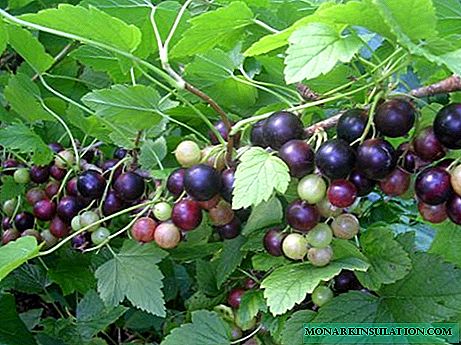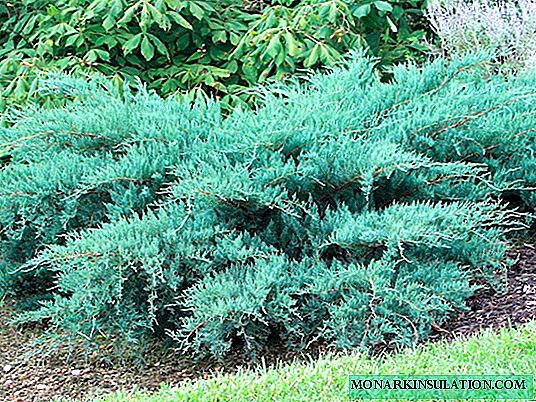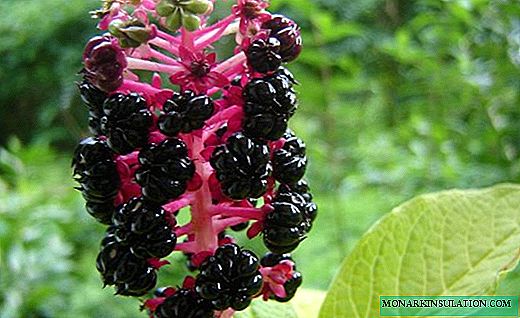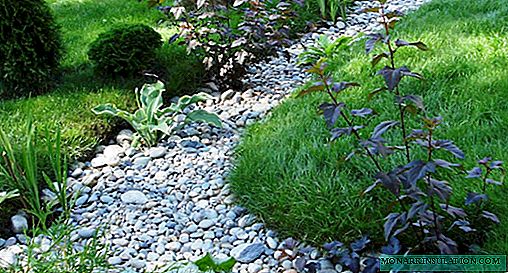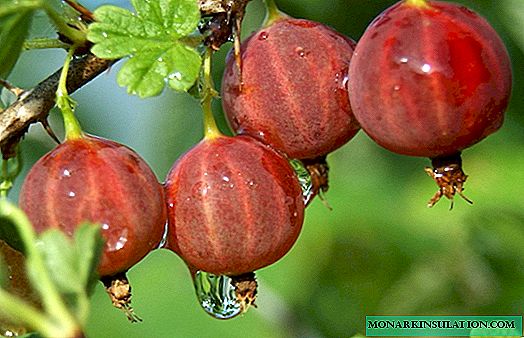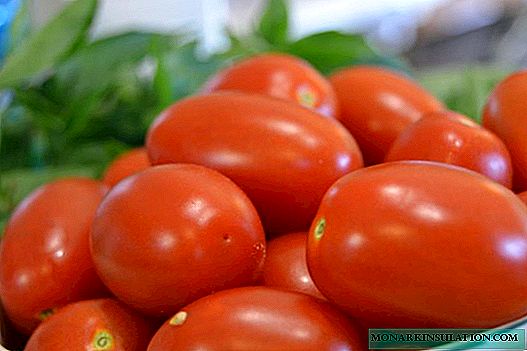
Tomato Novice today is by no means a novice, but a well-known and universally grown tomato variety. Its fruits are intended primarily for whole-canning, but are quite good and fresh. Owing to its reliability and unpretentiousness, the Novice has not left the garden beds for both amateur and professional farmers for more than 30 years.
Description of the Novichok tomato variety
Tomato Novichok was bred in Volgograd, at the State selection station by domestic scientists N.I. Chulkov and L.N. Popova. The variety was added to the State Register of the Russian Federation in 1986. The regions in which its cultivation is recommended belong to areas with a relatively warm climate:
- North Caucasian
- Middle Volga,
- Lower Volga
- Far Eastern regions.
An official document recommends that Novichok be cultivated in unprotected soil, but in areas with a climate not very comfortable for tomatoes, it is planted in greenhouses.

Tomato Novice has a very tight skin
Since the Novice gives his harvest quite amicably, and its fruits are very dense, the variety is suitable for mechanized harvesting. Therefore, it can also be grown in large agricultural enterprises for the purposes of the canning industry.
The novice belongs to the determinant varieties: the bush is compact, reaches a maximum height of 85 cm, but it is not standard. Therefore, despite the small height, small volume and medium branching, plants have to be tied to supports. Novice's leaves are of medium green color. The first inflorescence and, accordingly, the fruit brush is located above the 6th or 7th leaf, the next - every 1 or 2 leaves.
Each brush contains an average of 5 tomatoes. By maturity, the variety is mid-early: the fruits are ready for harvesting 114-127 days after germination. Tomatoes have an oval shape (the so-called cream), smooth, contain from 3 to 5 seed nests, covered with a very dense skin.
The classic Novice is orange-red, but there is another variety - Novice pink, developed later (in 2006) based on the traditional Novice. In addition to these two varieties, there is a fairly new variety Novichok de luxe, the fruits of which have a cuboid shape and red color, ripen a week later.

The fruits of the pink Novice differ from the red-fruited in appearance
Fruits are relatively small, ideal for canning in standard glass jars: their weight is 70-100 g. The taste is not considered excellent: it is evaluated by tasters at 4.0-4.6 points, this applies to both fresh tomatoes and canned products, cooked from them. Tomatoes go to salads, making juices, various preparations as a whole (salting, pickling, canning in one's own juice). Fruit do not crack on bushes or banks.

Tomato Novice is ideal for canning in glass jars
The total productivity of the Novichok tomato is estimated above average: about 2 kg of tomatoes can be collected from one bush, from 1 m2 with a tight fit - up to 14 kg. Since the bulk of the crop ripens at the same time, it is very convenient: fruit picking can be mechanized. This is facilitated by the fact that the peduncle is easily separated from the tomatoes, and in case of delay in picking the fruits on the bushes do not overripe.
Tomatoes harvested partially unripened perfectly "reach" during storage, and the crop is stored and transported perfectly.
The agricultural technology of the variety is simple: it is quite resistant to disease, requires minimal pinching, but it is difficult to call it cold-resistant. Therefore, we can only conditionally recommend Novichok for growing in the Central region and in a colder climate. Of course, this can be done in greenhouses, but the small height of the bushes of this tomato will make this option not quite profitable.
Advantages and disadvantages
Both red and pink Novice has approximately the same gamut of merits, the most important of which are:
- friendly return of the crop;
- stable and reliable productivity;
- bushes, convenient for leaving, a small amount of stepsons;
- excellent transportability and long shelf life of fresh fruits;
- universality of purpose;
- unpretentiousness to growing conditions;
- disease resistance;
- minimal risk of overriding and lack of cracking.
The disadvantages of the variety are not noted either by gardeners or specialists.
True, some summer residents say that the friendliness of the ripening of the crop is rather not a virtue, but a disadvantage: they would like a more extended fruiting.
Landing Features
Tomato Novice is a typical representative of determinant varieties, very simple in agricultural technology.
Dates and rules of landing
Get a tomato harvest Novice without growing seedlings is possible only in the southernmost regions. To do this, sow the seeds to a depth of 2-2.5 cm directly into the holes located in a checkerboard pattern, providing for the presence of 1 m2 beds of 6-7 bushes. You can sow when the temperature of the soil reaches at least 15aboutC. This situation in areas such as Astrakhan or the south of Volgograd may develop in early May. By early fall, it will be possible to harvest for harvesting.

In the south, even if they don’t sow tomatoes directly into the holes, they often organize a seedbed, from which they then transplant bushes to a permanent place
Basically, the Novice, like almost all varieties of tomatoes, is grown through the preliminary preparation of seedlings. In those areas where the cultivation of this tomato is recommended, a safe transplant of seedlings into unprotected soil is possible in late May, sometimes a little earlier. In this regard, sowing of seeds is carried out approximately on March 20, so that the finished seedlings are about 2 months old. In the middle lane, you can do this for 7-10 days later.
Growing seedlings consists of the usual steps well known to any gardener:
- Seed preparation. It is better to choose the most full-fledged ones, in which their bathing in a 3-5% solution of sodium chloride will help (unfit ones will not drown). After such calibration, the seeds are rinsed in water and disinfected by treatment with a dark solution of potassium permanganate for 20-30 minutes. Then, washing in clean water, sent for 2-3 days in the refrigerator, wrapped in a wet cloth.
- Soil preparation. You can mix turf land, peat and humus (a purchased mixture for tomato seedlings is also suitable). The soil is poured into a small drawer with a layer of 5-6 cm and, if there is doubt about its cleanliness, 2-3 days before sowing, it is abundantly watered with a light solution of potassium permanganate.
- Sowing. Prepared seeds are sown to a depth of about 1.5 cm 2.5-3 cm from each other.
- Temperature regulation. When the first sprouts appear (at room temperature it takes 5-7 days to wait), immediately transfer the box to a cool, well-lit window sill: temperature is above 18aboutC and twilight are fatal for seedlings. Only after 4-5 days should you raise the temperature to room temperature.
- Watering. Seedlings are rarely and moderately moisturized: dried land is less dangerous than wetland.
- Pick When 1-3 real leaflets appear, seedlings dive - transplanted into a more spacious container at a distance of 6-7 cm from each other. If the house has a lot of space, you can immediately in separate pots, ideally - peat, medium size. When picking, slightly pinch the tip of the main root. In the case of high-quality soil, top dressing of Novichka seedlings is optional, but if growth has stopped, it is worth feeding a diluted solution of any complex fertilizer (according to the instructions).
- Hardening. For 1-1.5 weeks before planting in the garden, seedlings are gradually taken out to the balcony and watered less. A beginner usually grows well in crates, but seedlings should not grow above 30 cm: the thicker the stalk and the thicker the stalk, the better. This variety usually does not have time to give floral brushes in living conditions in the apartment.

Lushhe of all seedlings grow in separate pots, but at the same time take up too much space in the apartment
The bed for growing tomatoes should be lighted, sheltered from the cold winds and generously fertilized.
Seedling Planting Algorithm:
- From autumn, humus and superphosphate (per 1 m) are added for digging.2 a bucket and 40-50 g, respectively), and in the spring a couple of handfuls of wood ash are poured out under loosening.
- Seedlings are planted in well-watered holes dug in advance. If it has grown compact — almost without deepening, but if it has outgrown — it is instilled up to the cotyledon leaves, possibly slightly obliquely.
- After planting, the soil is well watered and mulched with humus or simply dry soil.
- During the first week, plants shade from the scorching sun or shelter from possible cooling.
- A beginner does not require trellis, but it is advisable to tie bushes to pegs. Therefore, until the roots have grown, you can immediately stick near each bush a peg in height (above the ground) 60-70 cm.
Care Features
As in the case of any tomatoes, Novichok requires weeding with loosening the soil, watering, rare top dressing; bush formation is necessary to a minimum.
Watering
Watering is carried out depending on the weather, but excess water is useless for tomatoes. It is best watered in the evenings when the water in the tanks warmed up. When watering, they try to irrigate the entire garden, but do not pour too much on the leaves.

When watering tomatoes, you should try to get as little as possible on the leaves
Top dressing
No matter how well the bed is filled with fertilizers, you will have to do several dressings. The first time is 2-3 weeks after transplanting, then another 2-3 times per season. Any fertilizer is suitable, but if at the beginning of summer all the nutrients are needed, then starting from mid-July it is better to exclude nitrogen, limited to superphosphate and wood ash.
Tomatoes also respond well to foliar top dressing (spraying foliage with weak fertilizer solutions), especially if boric acid (1 g per bucket) is added to the formulation.
Garter
A beginner can do without tying up, but it is better to do this by at least once tying the bushes to the pegs immediately after flowering. Otherwise, the fruits will lie on the ground. A novice is usually formed in 1 or 2 stems. The second stem is the strongest stepson, most likely the lowest. The remaining stepsons are trying to remove, however, this tomato has few of them and they are mainly located in the lower part of the bush. As the fruit ripens, a few leaves are also torn off: first of all, yellowing ones and those that close the tomatoes from sunlight.
Amateur gardeners most often do not carry out Novice treatments against pests and diseases, taking advantage of its increased resistance to them. But still it is worth recognizing that prevention is highly desirable, even if using harmless drugs. As such, mainly Fitosporin, Trichodermin and the like are used, adding a little boric acid or regular milk to the solution.
Video: bush formation of determinant tomatoes
Features of planting and growing at home on the balcony
There are varieties of tomatoes specially designed for growing on the balcony, for example, Balcony Wonder, Balcony Bonsai or Pinocchio. A beginner is not included in this list, but some fans, taking advantage of the unpretentiousness of the variety and the compactness of the bush, plant it at home. The technique of planting and growing tomatoes on the balcony is not much different from that in the garden, but they should try to create natural conditions.
Seedlings are grown in the same way as for ordinary beds, but, depending on where the balcony is and whether it is glazed, sowing seeds can be made much earlier than usual. However, the glazed balcony on the south side can play a bad service: if the temperature rises significantly above 30aboutC, tomatoes feel bad, and when it approaches 40aboutWith can lose flowers and die at all. Therefore, with balcony growing, care is added to maintain an acceptable temperature, while ventilating the mini-garden.

Balcony cultivation of tomatoes is a cross between a hobby and a necessity, but some lovers get good results
Ready seedlings are transplanted into any containers of sufficient size (ideally, each bush should have at least a bucket of good soil mixture). Transplanted seedlings for several days requiring adaptation are obscured by the bright rays of the sun. Further care - as in the open ground. Of course, for irrigation take water from the tap, so it must first be defended, it is better - at least a day.
All basic operations (cultivation, top dressing, pinching, etc.) are required, but artificial pollination can be added to them: insects rarely fly onto the balcony. The Ovary, which sprayed the bushes, can also help. It is necessary to process plants with Bordeaux liquid a couple of times a season: the risk of contracting diseases in an enclosed space is very high. In general, it’s worth saying that only "landless" nature lovers have to deal with tomato cultivation on the balcony: doing it in natural conditions is much more convenient and reliable.
Video: tomatoes on the balcony
Reviews about Tomatoes Novichok
There is just a Beginner (red), different manufacturers. I know Red Novice since childhood, Pink came to me about three years ago. For me, red seems more simple, ordinary, or something. I can’t explain what the difference is, but pink also tastes better to me.
Katrinka
//www.tomat-pomidor.com/newforum/index.php?topic=995.0
Pink Beginner you won’t kill with a stick, it’s harvested, but on the tops it is very small, indifferent to the top, the taste is 4.
Maryana
//fermer.ru/forum/otkrytyi-grunt/33516
I want to advise you the "Novichok" tomato seeds, I often buy this tomato variety, and I like it, very good taste, dense pulp for winter seaming is very good.
Olympic
//otzovik.com/reviews/semena_semena_ukraini_tomat_novichok/
I add that this variety is resistant to the nematode (gall), as well as mechanical stress. It ripens evenly - in a couple of weeks I collected everything and forgot. Good and fresh, and in banks. Suitable for commerce, because it not only has a beautiful view and great taste, but is also well transported.
"Textexpert"
//www.bolshoyvopros.ru/questions/2010131-pomidor-novichok-kakie-otzyvy-kak-vyraschivat.html
Tomato Novice is a well-deserved and well-known variety that is respected and trusted by both professional vegetable growers and ordinary summer residents. It is not difficult to grow it, and the harvest will please both lovers of fresh produce and housewives engaged in harvesting tomatoes for the winter. In banks, even plum-like fruits look very attractive.


